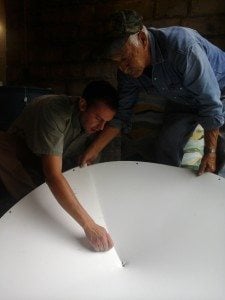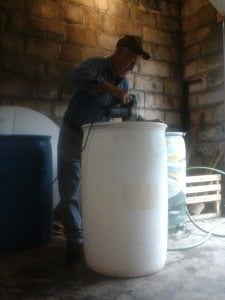Spring rains often bring copious amounts of the ever so important molecule H2O. Water is absolutely necessary for any type of life and obviously plants are no exception. Ensuring a good quality water source for your garden should be at the top of your list. Fortunately in our region water is not too hard to come by and most people I know have access to a creek, spring, or well somewhere on their property. However, depending on the placement of that particular creek, spring or well, there could be some undesirables found in that water source. Many may think that irrigation water doesn’t have to be up to drinking water standards to be useful and that is true. However, water quality is still important when considering a good source for irrigation water. Water can contain any number of biological pathogens as well as organic and inorganic compounds that can be harmful to your plants and to those who consume them.
Rainwater collection is a great way to provide a low cost, high quality water source for your plants. Rain is a product of distillation, thus it is basically pure, especially if you live in an area with good air quality. Rain barrels use a large surface area (whether that be a roof or a sheet of plastic) to collect precipitation. In our most recent workshop here at PMSS we discussed two types of rain barrels and demonstrated the construction of each.
Type 1: The Gutter system barrel has an 8” diameter hole in the top that is covered with a screen. A gutter system down spout is placed on top of this hole. Advantages of this type of barrel are that large amounts of water can be collected in a short amount of time depending on the size of your roof. The disadvantage is that the barrel is restricted to being close to your home, garage or other structure, which is not necessarily close to your garden.
Type 2: The rain saucer barrel comes as a kit with everything but the barrel. The fittings work perfectly with a 2” threaded bung hole found on most barrels. Advantages of this types is that the large plastic saucer replaces the need for a roof and gutter system. This frees you to place the barrel right next or even in the center of your garden. The disadvantage is that you will not collect as much rain however the model I used for the work shop will yield 6.75 gallons of water per inch of rain.
As you can see not all rain barrels are created equal and one should consider which type will be best suited for your garden situation.






Leave A Comment